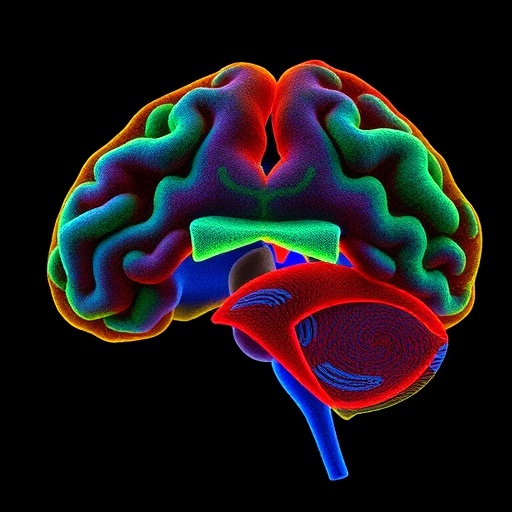
In a groundbreaking study, dermatology researchers at the University of Maryland School of Medicine have unveiled a novel skin disease that has remained elusive due to a lack of precise diagnostic methods. This discovery emerges from a patient suffering from erythroderma, a severe condition that severely impacts the skin’s integrity and functioning. Erythroderma, characterized by widespread redness, itching, and peeling of the skin, can lead to serious health complications, underscoring the critical need for effective diagnostic tools and targeted therapies.
Traditional treatment approaches, such as the use of steroids and immunosuppressive medications, have proven ineffective for this particular patient, who was left without adequate relief after months of therapy. Erythroderma is a complex condition that can arise from various underlying causes, which complicates its management and hinders a standardized treatment protocol. The complexity of diagnosing and managing chronic inflammatory skin conditions like erythroderma calls into question the capacity of existing diagnostic tools and highlights the need for innovative solutions.
The study, published in the scientifically reputable journal Scientific Reports, illustrates how advanced immunophenotyping techniques can discern the specific cytokine activity within an individual’s blood. Cytokines, the signaling molecules that regulate immune responses, were identified as critical players in the pathophysiology of the condition. The research team led by Dr. Shawn Kwatra, a distinguished figure in dermatology, successfully isolated circulating blood cells to discern these unique cytokine profiles.
Through a process called flow cytometry, the researchers effectively “fingerprinted” the cytokines present in the patient’s blood, providing a targeted approach to identifying inflammation-inducing factors. This method showcases the potential of high-dimensional blood analyses to uncover previously undetectable conditions by highlighting specific cellular interactions and inflammation drivers. The insights gleaned from this study could redefine how chronic inflammatory skin diseases are understood and treated.
Particular attention was given to interleukin-13 and interleukin-17, two cytokines that were present at heightened levels in this erythroderma patient. Previous assumptions about cytokine levels remained vague, but this study provides a clear linkage between these specific molecules and the disease state, thus legitimizing the targeted approach for treatments. The innovative diagnostic test developed by the University of Maryland team could pave the way for more personalized treatment options that are grounded in precise immunological profiles rather than trial-and-error methodologies.
Upon identifying the contributing cytokines, the researchers administered targeted therapies employing biologic inhibitors that effectively blocked these specific immune responses. The patient’s condition showed remarkable improvement with the help of monoclonal antibodies, dupilumab and secukinumab, which are specifically tailored therapies directed towards interleukin-13 and interleukin-17. This development represents a pivotal moment not only for the patient but also for the entire field of dermatology, as it opens avenues for individualizing care based on molecular characteristics.
The methodology adopted in this research does not merely stop at diagnostic discovery; it extends to treatment implications, marking a significant step towards precision medicine in dermatology. The ability to analyze immunophenotypes for skin diseases can serve multiple purposes, including helping clinicians identify treatment pathways that have not been considered in the past. This approach could challenge long-held notions of standard treatments and advocate for tailored strategies that account for the intricacies of individual immune responses.
As research continues in this promising direction, the authors of the study are keen on expanding their diagnostic approach to encompass other inflammatory skin diseases. By instituting a more holistic understanding of non-specific inflammatory conditions through immunophenotyping, chances are enhanced for discovering more treatment avenues and mechanisms of action informing new therapies. The push towards identifying specific disease markers not only fosters better management strategies but also elevates patient care standards considerably.
Co-author Dr. Hannah Cornman highlighted the importance of recognizing cytokines in this context. According to her, the discovery of these particular inflammatory markers has clarified the treatment process while confirming their role as significant contributors to the disease. This groundbreaking realization could well reshape how dermatologists approach systemic inflammatory responses associated with skin conditions, providing hope for patients previously left with no viable options.
The study is a collaborative effort that also included contributions from researchers at prominent institutions such as Duke University, George Washington University, and Johns Hopkins University. With significant funding from the National Institutes of Health, the findings compiled in this research bring forth an ambitious vision of developing sophisticated immunophenotyping techniques to aid clinicians in identifying the etiology of chronic skin diseases.
As the medical community reflects on the findings, a collective responsibility emerges: to translate this innovative research into clinical practice effectively and equitably. With chronic inflammatory skin diseases affecting a considerable number of individuals, implementing these findings could revolutionize existing care paradigms, ultimately leading to enriched patient outcomes and enhanced life quality for those suffering from skin-related ailments.
With the promise of more effective, targeted therapies, this study ushers in a new era in dermatology, where the amalgamation of advanced research methods and clinical application could lead to profound treatment breakthroughs. As more studies emerge from this research avenue and additional collaborations unfold, the hope is to bridge the gap between innovative research and tangible patient care. Harnessing the power of cellular diagnostics for a deeper understanding of skin diseases paves the way for future triumphs in healthcare.
Subject of Research: People
Article Title: Targeted dual biologic therapy for erythroderma of unknown etiology guided by high-parameter peripheral blood immunophenotyping
News Publication Date: 14-Jan-2025
Web References: Journal Article
References: Do not apply
Image Credits: Credit: University of Maryland School of Medicine
Keywords: Skin, Drug therapy, Cytokines, Cell therapies, Inflammatory disorders
Tags: advanced immunophenotyping techniqueschronic inflammatory skin conditionscytokine activity in skin diseasesdermatology research breakthroughseffective diagnostic tools for skin diseaseserythroderma diagnosis challengesimmune response regulation in dermatologynovel skin diseaseskin disease complications and managementtargeted therapies for skin conditionstraditional treatments for erythrodermaUniversity of Maryland dermatology study





